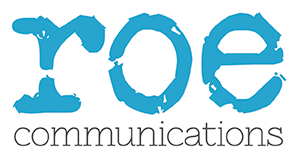It’s been a turbulent time for business schools. Campuses have closed, teaching moved online, and entire teams shifted to home working.
Many business school communications teams are engaged in contingency communications and the priorities of keeping students and staff engaged and reassured.
At the same time, many are wondering how they can also support the needs of their school in terms of revenue generation and attracting new students, without seeming insensitive to the current environment.
Despite the uncertainty, we are at least a little clearer about what the next few months may look like.
It seems unlikely that students will return to campuses until the autumn at the earliest, admissions deadlines have been pushed back, while travel restrictions may well continue to impact international students.
This means that schools have some information on which to focus their communications efforts.
But more significantly for all of us in the sector is that people are looking to organisations to take a lead on this challenge. A recent poll of 12,000 people by Edelman showed that people are expecting brands to “stop selling to them and start solving the unique challenges of life during a pandemic”.
The consequences of not doing so could be significant. For instance, the same survey said that just under two thirds (64 per cent) of respondents in the UK said that how well a company responds to the coronavirus crisis will have a huge impact on their likelihood of buying from it in future.
Against this backdrop, now is a good time for business schools to look at adapting their content strategies, both to help people in the immediate future, but also to maintain trust and engagement with their audiences in the long-term.
This is not about simply copying what others are doing but thinking about the resources that you have and what makes sense for your school and its values. It’s also best practice to keep up to date with the evolving situation to ensure that your content is appropriate and conveys the right tone.
As a starting point, here are four key areas to help business school communicators re-focus their content strategies now.
Practical action
Can you communicate the practical support that your school is offering in this crisis?
Are you supporting ventures on the front-line of vaccine research, or equipment production, or helping people isolating at home? These could have come through your accelerator scheme or via current students or alumni. They could also be ‘live’ case studies of businesses being supported by your MBAs.
Can you help them achieve crucial funding, networks, or resources by telling their stories on your channels or within the wider media?
Do you have a story to tell about supporting your immediate local community? Charities and vulnerable groups are under a massive funding crunch right now. Can you look at ways of support, whether it’s financial or practical, such as sharing your resources or mobilising your students?
Research
We are all in the position of having large back-catalogues of research. Can any of this research be re-cycled or re-shared at this time to help your audiences?
For instance, you might have some research about how to lead through uncertain times, how to manage a remote workforce, or how healthcare systems can become more resilient.
The lockdown is hitting small businesses particularly hard. You may have research and advice to offer them on how to adapt their services more quickly or move their services online.
Can you re-cycle research papers so that they are in a more readable format and therefore more useful to time-poor business and government leaders now? Or interpret them in a different format altogether, for instance by infographics or audio/visual means?
Teaching and expertise
As well talking about the teaching happening online, some schools have already taken the initiative to create new, valuable content for their audiences.
Several business schools have created webinar series or LinkedIn Lives with experts talking about how to lead through this crisis, which are being shared widely. Can you think about ways of connecting with your audience online, using your faculty expertise and the technology available?
With everyone working from home, now is good time to do an audit of your faculty to see who is available to write articles or take part in media interviews. While they may not be able to contribute to health stories, they may well have valuable insights into what’s going on in a sector, or contribute to global business themes such as leadership, digital transformation or supply chains.
Is there a model that your school teaches that is particularly pertinent to these times? Examples include scenario planning and innovation.
Finally, there is a real demand for content about what the future may hold. Will this crisis fundamentally change the way that we live, work and behave. Are there any signs of good news? Some commentators think so, but what does your faculty believe?
Preparing for a new future
If there’s a silver lining to this crisis, it’s that the demand for business education could be even higher when this is all over. With many people contemplating their futures at home during lockdown, it’s entirely likely that they will finally decide to pursue different careers or set up the venture they always dreamed of.
But the topics they want to learn, and the way they will be delivered, may be very different to before.
Smart business schools will be starting to plan for this new reality. They will be giving priority to the subjects and topics, such as entrepreneurship and leading virtually, which will have increased interest.
This article originally appeared on the EFMD Blog, 9 April 2020.


